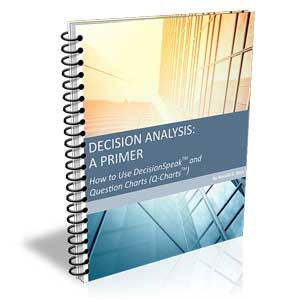Business Process Model or Data Flow Diagram?
The client asked to remove most of the operational business model steps explaining, "There is too much detail here." He requested the business process model be reduced to three steps: Actor enters data; Application accepts data; Actor views data. Why the business process starts — and the inputs, transformation, and outputs between each step — was, in his opinion, 'unnecessary'. I was giving my client a business process model and he wanted a data flow diagram.
I have been dismayed at the number of individuals who believe that a data flow diagram is a form of a business process model. It is not! The focus of the business process flow is the business as well as the identification of the logical steps or tasks for how work is accomplished. A quality operational business process model should include "the [business] tasks required for an enterprise to satisfy the planned response to an operational business event from beginning to end with a focus on the roles of actors, rather than the actors' day-to-day job."[1] The focus of a data flow diagram is the data (duh!), identifying the input, output, and transformation of the data between processes.
The business process should always provide value to the organization, with actors performing linked steps contributing to a transformation from the beginning of the process to the completion of the goal. A step is the lowest level of an activity necessary to support the transformation, cannot be decomposed, and is assigned to an actor. Can an application be an actor? Maybe, if the application performs some critical transformation in the business process. An arrow indicates the flow of the work as being handed off from one actor to another for the next transformation — I visualize an assembly line with the work flowing from one actor's station to the next until the product is completed.
To test that the activity is actually a step, I use a recommendation by Ron Ross for using a noun-verb name for the step and flip the name around to see if the name still makes sense describing the step. For example, "Verify license" becomes "license verified" and confirms there is a transformation performed for this activity. There are many different business process modeling methods — BPMN is one — but in my practice, I use a simple swim lanes diagram as basic notation for clarity so all my stakeholders can understand the representation.
A data flow diagram has a completely different purpose: it illustrates the inputs, outputs, and flows of data between business processes. Data flows into the process, is transformed within the process, and generates data output, as well as identifying where data is stored. The business process model concentrates on the logical activities of the actors for a single process, whereas the data flow diagram demonstrates the physical movement of data through many processes.
A data flow diagram may support a business process model, but it is not a substitute for a business process model!
References
[1] Ronald G. Ross & Gladys S.W. Lam, Building Business Solutions, Business Rules Solutions, LLC (2015).
# # #
About our Contributor:
Online Interactive Training Series
In response to a great many requests, Business Rule Solutions now offers at-a-distance learning options. No travel, no backlogs, no hassles. Same great instructors, but with schedules, content and pricing designed to meet the special needs of busy professionals.











